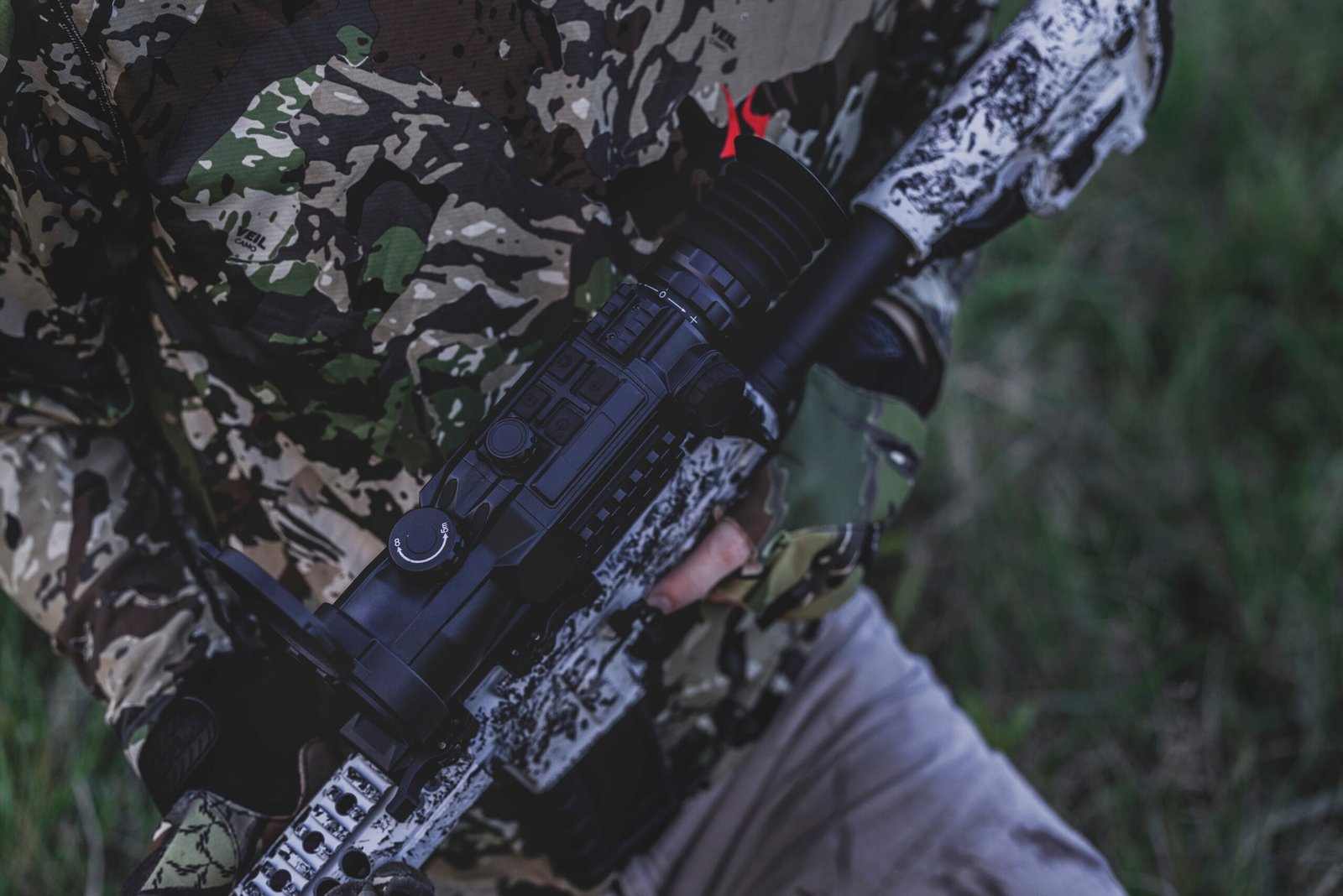
Coyote hunting offers an exciting challenge for beginners eager to explore the outdoors. Understanding coyote behavior is crucial for success. Coyotes serve as both predators and scavengers, maintaining balance in ecosystems. The population of coyotes has increased three-fold since the late 1980s, making hunting essential for regulating numbers and minimizing conflicts with humans and livestock. A successful hunt requires skills and knowledge about coyote habits and habitats. The DAL666 LRF coyote hunting scope’s guide provides valuable insights into enhancing your hunting experience with advanced optics.
Understanding Coyotes
Coyote Behavior
Habitat and Range
Coyotes adapt to various environments, thriving in both urban and rural areas. Urban coyotes often display bolder behavior due to frequent human interactions. Rural coyotes remain more cautious and elusive. Understanding these differences helps hunters tailor their strategies for effective coyote hunting. Coyotes inhabit diverse landscapes, including forests, grasslands, and deserts. Hunters must learn to identify signs of coyote presence, such as tracks and scat, to locate prime hunting areas.
Feeding Habits
Coyotes are opportunistic feeders with a varied diet. Small mammals, birds, and insects form the bulk of their meals. Coyotes also scavenge on carrion and occasionally hunt larger prey like deer. Knowledge of feeding habits aids hunters in predicting coyote movements and selecting optimal hunting spots. Hunters can use calls that mimic prey sounds to attract coyotes during hunts.
Social Structure
Coyotes exhibit a complex social structure. Packs consist of a dominant pair and their offspring. Lone coyotes often roam in search of mates or new territories. Understanding social dynamics enhances hunting strategies. Hunters can use howls to locate and communicate with coyotes, increasing chances of success.
Importance of Coyote Hunting
Population Control
Coyote hunting plays a crucial role in population control. Overpopulation leads to increased conflicts with humans and livestock. Hunting helps maintain a balanced ecosystem by regulating coyote numbers. Effective population management prevents overgrazing and protects vulnerable species.
Impact on Ecosystems
Coyotes influence ecosystems by controlling prey populations. Excessive coyote numbers can pressure big game herds, affecting fawn and calf survival rates. Hunters contribute to ecosystem balance by managing coyote populations. This action supports biodiversity and promotes healthy wildlife communities.
Ethical Considerations
Ethical coyote hunting requires respect for wildlife and adherence to regulations. Hunters must prioritize humane practices and avoid unnecessary suffering. Responsible hunting ensures sustainable coyote populations and fosters positive relationships between hunters and conservationists. Ethical considerations enhance the overall hunting experience and promote a respectful approach to nature.
Essential Equipment for Coyote Hunting

Equipping yourself with the right gear is essential for a successful coyote hunt. The right tools enhance your effectiveness and ensure a safe and ethical hunting experience.
Firearms and Ammunition
Choosing the Right Rifle
Selecting a reliable firearm is crucial for coyote hunting. Many hunters prefer rifles with calibers ranging from .223 to .308. These calibers offer the accuracy and power needed to take down a coyote at various distances. Shotguns and pistols can also be effective, especially in close-range scenarios. Opt for a firearm that you feel comfortable handling and that suits your hunting style.
Types of Ammunition
The choice of ammunition impacts your hunting success. Lightweight bullets offer speed and accuracy, while heavier ones provide more stopping power. Consider the terrain and typical shooting distances when selecting ammunition. Experiment with different types to determine which works best for your rifle and hunting conditions.
Optics and Accessories
Scopes and Binoculars
A high-quality scope is indispensable for coyote hunting. Look for scopes with low magnification and a wide field of view. These features help you aim accurately, especially in low-light conditions. Binoculars are also valuable for scanning large areas and spotting coyotes from a distance. Quality optics enhance your ability to detect movement and identify targets.
Calls and Decoys
Coyote calls play a vital role in attracting these elusive animals. Use calls that mimic coyote vocalizations or prey in distress. These sounds pique the curiosity of coyotes and draw them closer to your position. Decoys can further enhance your setup by providing a visual lure that complements the audio cues.
Introducing the DAL666 LRF infrared scope
The DAL666 LRF coyote hunting scope’s guide offers an advanced solution for serious hunters. This thermal riflescope excels during nighttime hunts when coyotes are most active. With a detection range of 2296 yards, the DAL666 LRF allows you to spot coyotes from afar. The 2.7x basic optical magnification and adjustable digital zoom provide precise targeting. The robust battery life ensures extended hunting sessions without power concerns. This scope enhances visibility in complete darkness and helps track multiple targets. The user-friendly design makes it suitable for both beginners and seasoned hunters.
Clothing and Gear
Camouflage Clothing
Coyotes possess excellent eyesight, making camouflage clothing essential. Choose attire that matches the terrain you will hunt in. A face mask or face paint helps break up your outline, reducing the chance of detection. Proper camouflage increases your chances of getting close to your target undetected.
Safety Gear
Safety should always be a priority. Equip yourself with protective eyewear and ear protection. These items safeguard against potential hazards during the hunt. A first-aid kit is also advisable for addressing minor injuries in the field. Prioritizing safety ensures a positive and secure hunting experience.
Techniques and Strategies

Mastering techniques and strategies in coyote hunting can significantly enhance your success. Understanding the behavior and environment of coyotes provides a solid foundation for effective hunting. This section will guide you through essential scouting, tracking, calling, and setting up a hunt.
Scouting and Tracking
Scouting and tracking play a crucial role in coyote hunting. Identifying signs of coyote presence helps you choose the best hunting locations.
Identifying Coyote Tracks
Coyote tracks offer valuable clues about their movements. Look for tracks that resemble those of a domestic dog but are more oval and compact. The front paw prints are usually larger than the hind ones. Pay attention to the stride length and direction to determine the coyote’s speed and path. Recognizing these tracks increases your chances of finding active coyote areas.
Using Trail Cameras
Trail cameras are excellent tools for monitoring coyote activity. Place cameras in areas with frequent coyote sightings or near water sources. Set the cameras at a height that captures the coyote’s natural movements. Regularly check the footage to identify patterns and peak activity times. This information helps you plan your hunts more effectively.
Calling Techniques
Calling techniques are vital for attracting coyotes. Coyotes respond well to sounds that mimic other coyotes or prey in distress.
Types of Calls
Various calls can be used in coyote hunting. Predator calls mimic the sounds of animals in distress, such as rabbits or birds. Coyote vocalizations, like howls and barks, communicate territorial presence. Experiment with different calls to see which ones yield the best results. Each call serves a specific purpose and can attract coyotes from a distance.
When and How to Use Calls
Timing and technique are crucial when using calls. Use distress calls during early morning or late afternoon when coyotes are most active. Start with low volume calls and gradually increase the intensity. Pay attention to the wind direction to ensure the sound reaches the coyotes. Patience is key; wait quietly after calling to give coyotes time to approach.
Setting Up a Hunt
Setting up a hunt involves choosing the right location and creating an effective setup.
Choosing a Location
Location selection is critical in coyote hunting. Look for areas with abundant food sources and cover for coyotes. Fields, open meadows, and edges of forests are ideal spots. Consider the wind direction to avoid alerting coyotes to your presence. A well-chosen location increases the likelihood of encountering coyotes.
Setting Up Blinds or Stands
Blinds and stands provide concealment and a strategic vantage point. Use natural cover like bushes or trees to blend into the environment. Portable blinds offer flexibility and can be set up quickly. Ensure you have a clear line of sight and shooting lanes. Proper setup allows you to remain undetected and improves your chances of a successful hunt.
Coyote hunting requires a combination of skills, patience, and strategy. By mastering these techniques, you can increase your success and enjoy the thrill of the hunt.
Safety and Ethical Considerations
Safety Tips
Firearm Safety
Firearm safety is paramount in coyote hunting. Always treat every firearm as if loaded. Keep the muzzle pointed in a safe direction. Ensure your finger stays off the trigger until ready to shoot. Verify your target and what lies beyond it. Regularly check your firearm for proper functioning. Safe handling of firearms prevents accidents and ensures a positive hunting experience.
Hunting in Groups
Hunting in groups requires clear communication. Establish a plan before the hunt begins. Assign roles and responsibilities to each group member. Maintain visual contact with fellow hunters. Use hand signals or radios to communicate silently. Stay aware of each other’s positions at all times. Group hunting enhances safety and fosters camaraderie among hunters.
Ethical Hunting Practices
Respect for Wildlife
Respect for wildlife forms the foundation of ethical hunting. Approach hunting with a mindset of conservation and stewardship. Avoid unnecessary suffering by ensuring quick, humane kills. Use appropriate calibers and shot placement for effective results. Appreciate the role of coyotes in the ecosystem. Ethical hunting practices contribute to sustainable wildlife populations.
Legal Regulations
Adhering to legal regulations is essential for ethical hunting. Familiarize yourself with local hunting laws and seasons. Obtain the necessary permits and licenses before heading out. Understand bag limits and restrictions on hunting methods. Report your harvests as required by law. Compliance with regulations supports conservation efforts and maintains the integrity of the sport.
Coyote hunting offers an opportunity to connect with nature while contributing to ecosystem balance. Prioritizing safety and ethical considerations ensures a rewarding and responsible hunting experience. Embrace these principles to enhance your skills and foster a deeper appreciation for the natural world.
Coyote hunting offers a rewarding challenge for those eager to connect with nature. Mastering skills and understanding coyote behavior enhances your success. Ethical hunting practices ensure respect for wildlife and community safety. Many rural communities appreciate hunters who protect homes and livestock from coyotes. Embrace the opportunity to learn and grow as a responsible hunter. Continue exploring resources and honing your skills. Your efforts contribute to ecosystem balance and community well-being. Take pride in your journey and inspire others to pursue ethical hunting.
